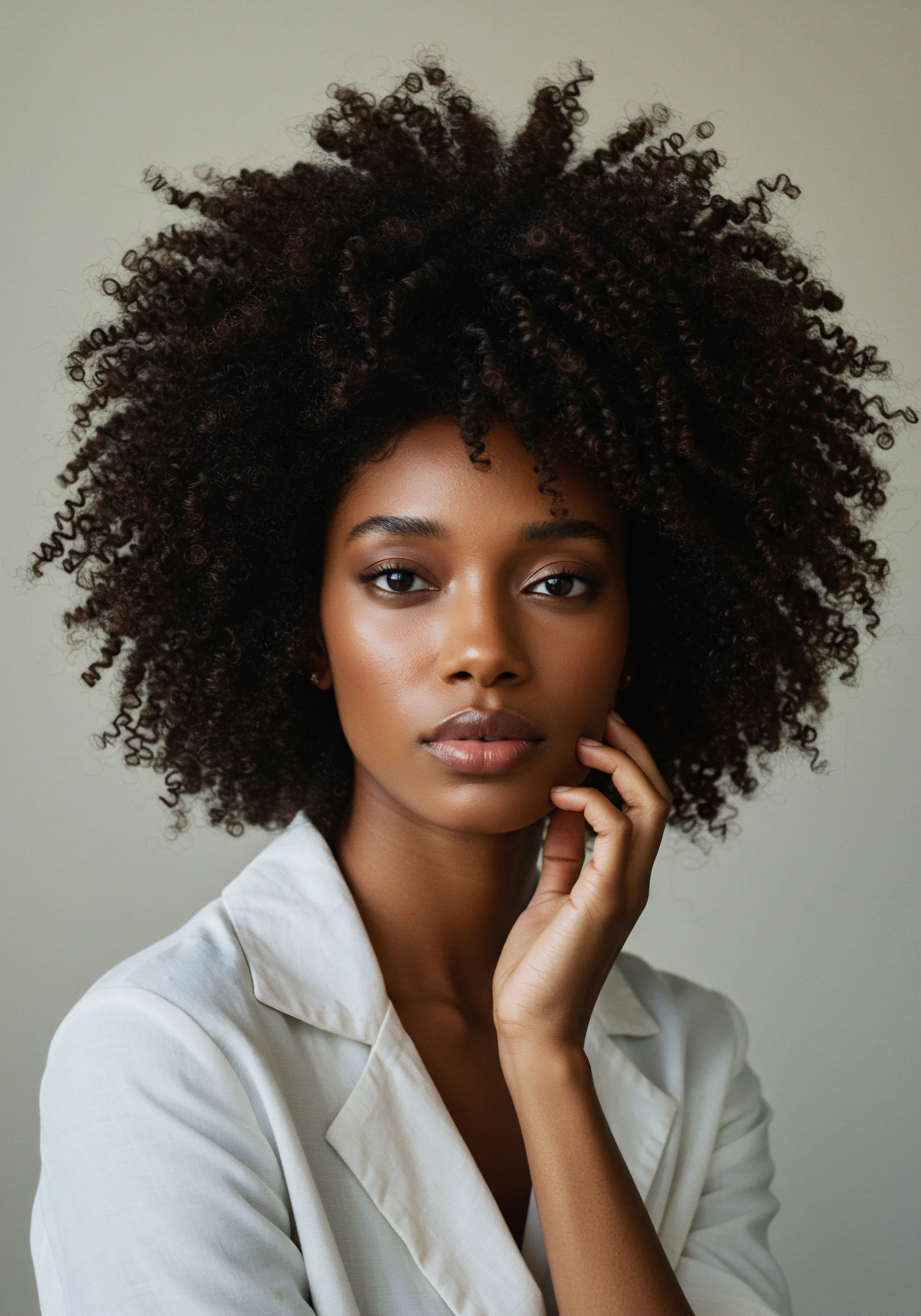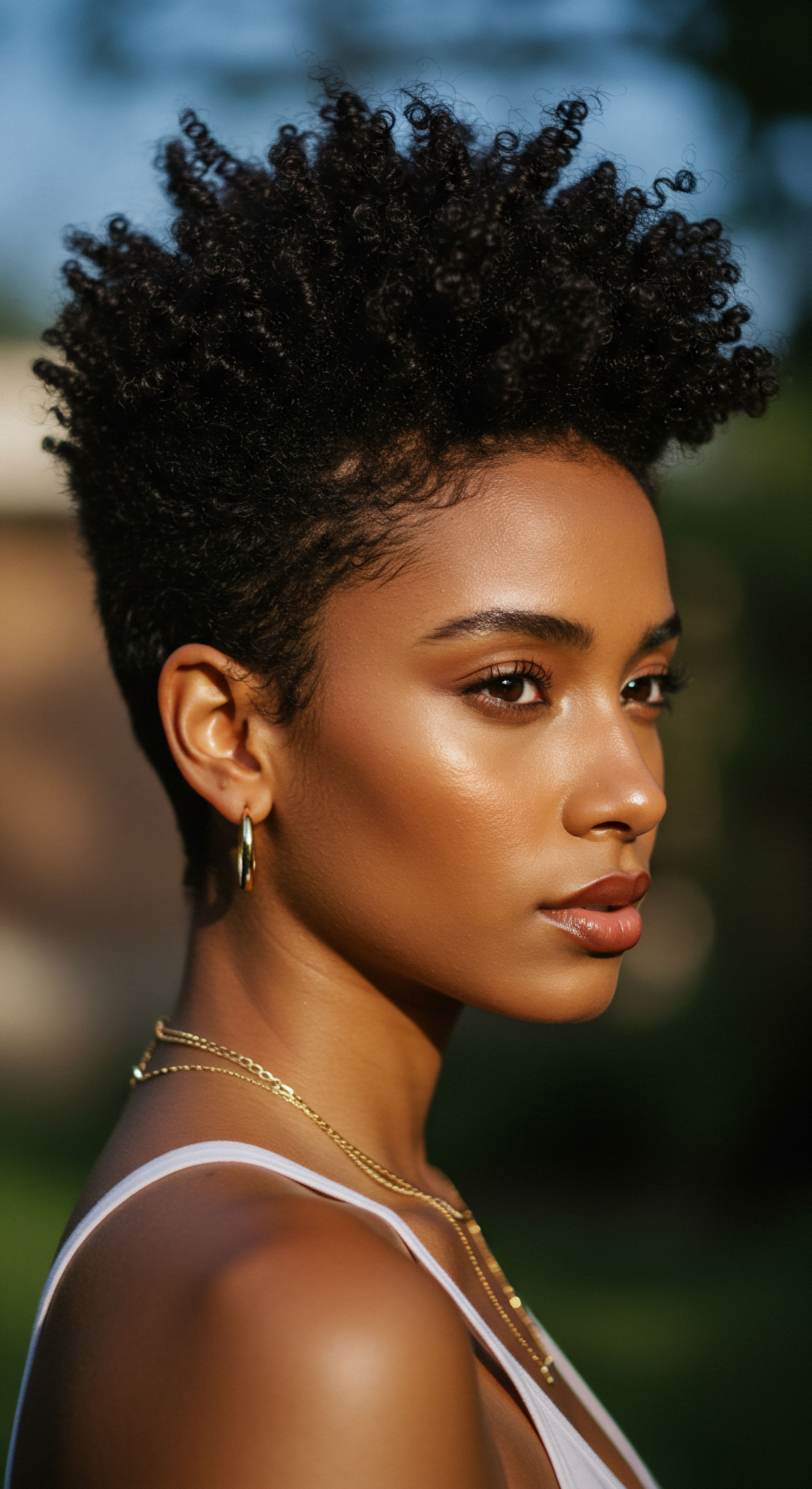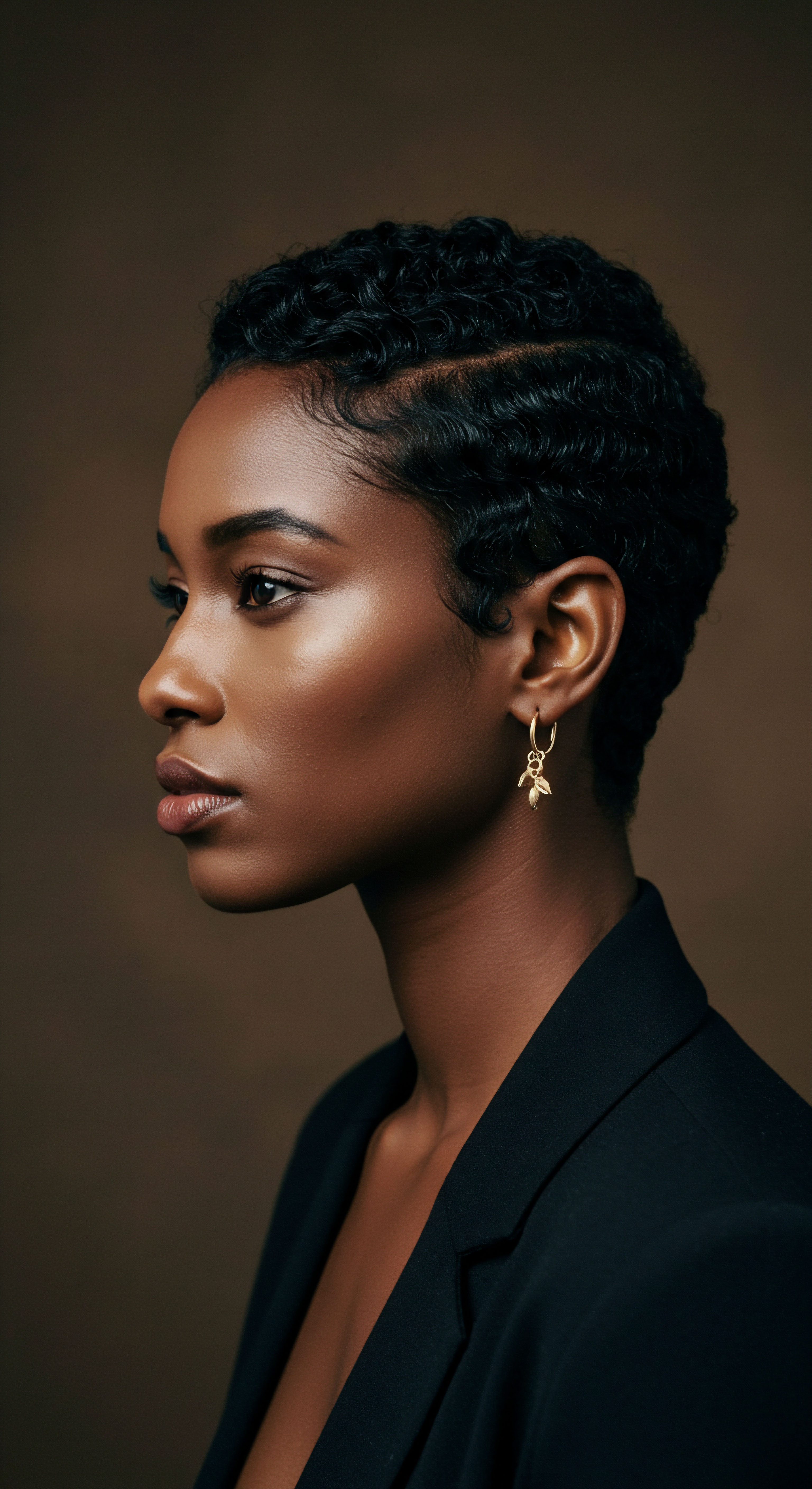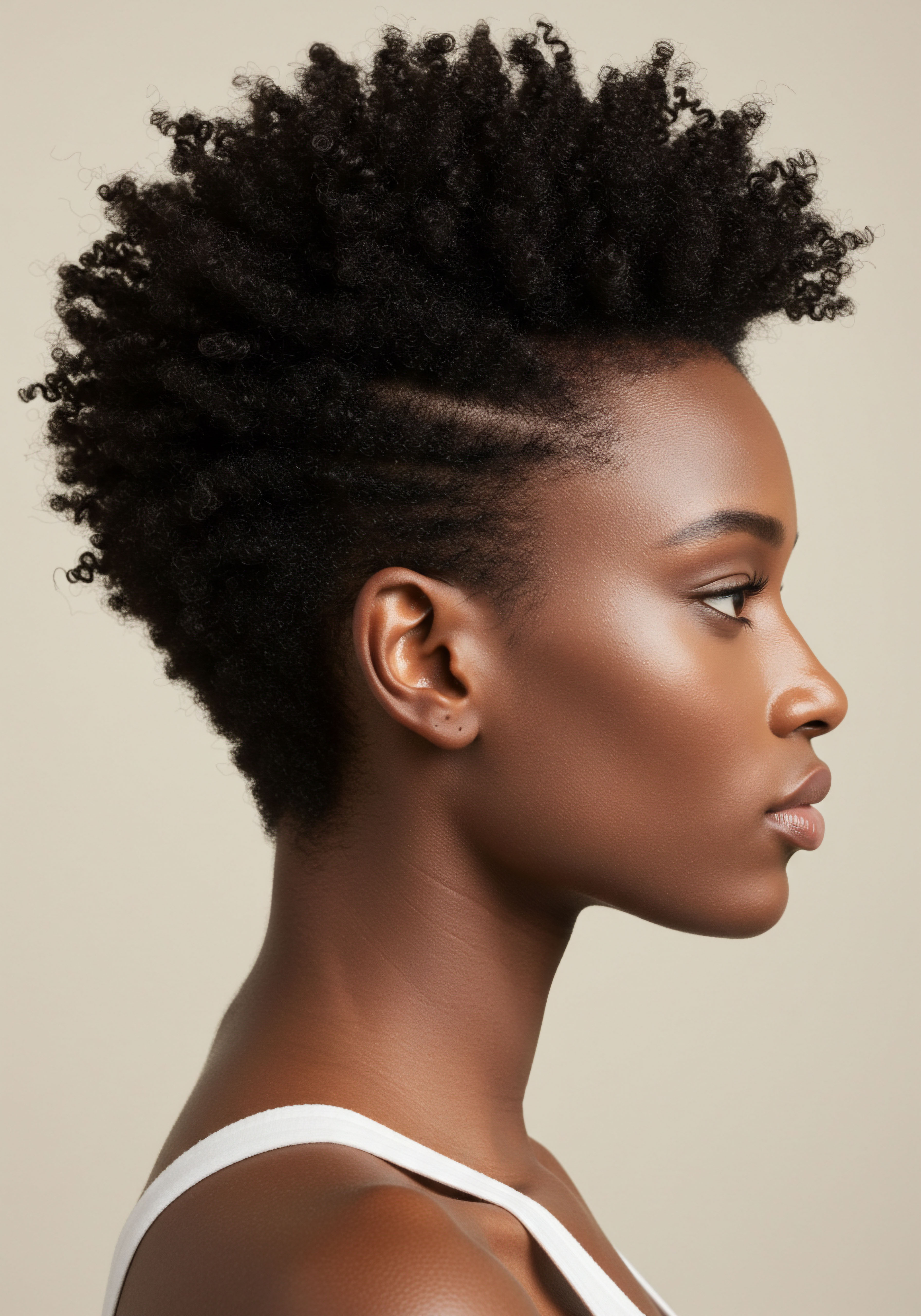
Roots
Consider for a moment the profound intimacy of hair, not merely as a biological outgrowth, but as a living record, a delicate parchment upon which generations have inscribed their wisdom. Before the advent of modern laboratories and synthetic compounds, the very earth provided the bounty that nurtured our strands. Our ancestors, keenly attuned to the rhythms of nature and the whispers of their bodies, discovered through careful observation and inherited knowledge the secrets to keeping hair supple, resilient, and vibrant.
Their understanding of hydration, though perhaps articulated differently, was deeply practical, born from a need to protect hair from harsh climates and the demands of daily life. This ancient wisdom, passed down through the ages, continues to resonate in the quiet hum of today’s hydration methods, offering a profound connection to the past.
The elemental need for moisture in hair is not a new discovery. Across continents and through countless eras, communities recognized that dryness invited fragility, leading to breakage and a diminished appearance. From the arid plains of Africa to the humid landscapes of Asia, from the cool forests of North America to the sun-drenched Mediterranean, each culture devised ingenious methods to counteract the environmental forces that sought to strip hair of its vital moisture. These practices were often interwoven with daily life, a natural extension of self-care and communal bonding.
Ancient wisdom, born from environmental necessity, laid the foundational understanding for hair hydration.

Understanding Hair’s Natural State
At its most fundamental level, hair is a complex protein structure, primarily composed of keratin. This protein, arranged in intricate helical patterns, forms the cortex, shielded by an outer layer of overlapping cuticle cells. The integrity of these cuticle scales plays a significant role in how well hair retains moisture. When the cuticle lies flat, it creates a smooth surface that helps seal in water and reflects light, giving hair a healthy sheen.
Conversely, when the cuticle is raised or damaged, moisture escapes more readily, leading to dryness and a rough texture. Our forebears, without microscopes or chemical analyses, intuitively grasped this principle, observing how certain natural applications smoothed the hair and lent it a luminous quality.
Consider the role of natural oils and fats in these early hydration efforts. These substances, readily available in ancestral environments, provided a protective barrier. They coated the hair shaft, acting as emollients that softened the strands and as occlusives that slowed water loss from the hair’s interior. For example, in regions where olive trees flourished, such as ancient Greece and Rome, olive oil became a staple for hair conditioning.
Its rich composition of fatty acids and antioxidants offered deep nourishment and a protective shield against environmental stressors. Similarly, in South Asia, coconut oil, with its unique molecular structure, was revered for its ability to penetrate the hair shaft and reduce protein loss, thereby bolstering hair’s internal strength and capacity to hold water.

Early Humectant Discoveries
Beyond oils, some ancestral traditions also utilized natural humectants—substances that attract and draw moisture from the air. Honey, for instance, a sweet gift from nature, found its way into Egyptian hair rituals. Its hygroscopic properties allowed it to pull moisture into the hair, providing a softening and hydrating effect.
Clays, too, while primarily used for cleansing, often possessed mineral compositions that could contribute to a balanced scalp environment, indirectly supporting hair health and moisture retention. These early applications of humectants highlight a sophisticated, albeit empirical, understanding of how to invite and secure hydration within the hair structure.
- Olive Oil ❉ A Mediterranean staple, used for centuries to condition and add luster.
- Coconut Oil ❉ A South Asian treasure, prized for deep penetration and protein loss reduction.
- Honey ❉ An ancient Egyptian addition, recognized for its humectant properties.
- Castor Oil ❉ Valued in ancient Egypt and India for its thick, moisturizing qualities.

Ritual
The pathway to vibrant hair was, for our ancestors, a deliberate sequence of actions, a dance of hands and natural elements. This was not merely about applying a product; it was about the intention, the cadence, and the cultural significance embedded within each gesture. These daily or periodic practices, often shared across generations, transformed simple acts of care into profound rituals, shaping not only the physical state of the hair but also the very identity of the individual and community. We can learn much from these structured approaches to care, particularly how they ensured consistent, deep hydration.
Consider the widespread practice of oiling, a cornerstone of many ancestral hair care traditions. This was rarely a quick application. In Indian Ayurvedic practices, for instance, hair oiling, known as ‘Champi’, was and remains a ceremonial activity, often involving warm oils massaged into the scalp and along the hair length for extended periods. This allowed the oils to truly settle into the hair and scalp, nourishing from the root to the tip.
A 2003 study on coconut oil, a common ingredient in Ayurvedic hair care, revealed its capacity to reduce protein loss in hair when applied as a pre-wash treatment, a scientific validation of an ancient practice. This deep conditioning approach protected hair from the stripping effects of subsequent cleansing and maintained its structural integrity, a fundamental aspect of retaining moisture.

Protective Styling and Moisture Security
Beyond topical applications, ancestral methods for hydration extended to styling choices that actively preserved moisture. Protective styles, such as braids, twists, and various forms of updos, were not merely aesthetic preferences; they served a crucial function in safeguarding the hair from environmental exposure. For many African and Native American cultures, these styles were practical solutions to minimize tangling, reduce breakage, and lock in moisture, especially in harsh climates. The Himba women of Namibia, for example, apply a mixture of ochre, butter, and resin called ‘otjize’ to their hair, styling it into thick braids.
This mixture not only gives their hair its characteristic reddish hue but also provides significant protection against the sun and dryness, effectively sealing in moisture. This ancient approach to protective styling highlights a sophisticated understanding of environmental impact on hair hydration, a lesson highly relevant for modern textured hair care.
Ancestral hair care rituals were comprehensive systems of protection, not isolated product applications.
The intentionality behind these practices extended to the tools and techniques employed. Combs crafted from natural materials like wood or ivory were chosen for their gentle detangling properties, minimizing mechanical damage that could compromise the hair’s outer layer and lead to moisture loss. Scalp massages, a recurring element across diverse traditions, stimulated blood circulation to the hair follicles, promoting a healthy scalp environment conducive to strong, well-hydrated hair growth. These practices, though ancient, mirror contemporary recommendations for gentle handling and scalp stimulation to support overall hair wellness.

Modern Interpretations of Ancient Hydration
Today, the spirit of these ancestral rituals persists in modern hydration methods. The widespread adoption of the “Liquid, Oil, Cream” (LOC) method for textured hair, for instance, echoes the layered approach of ancient applications. This method involves applying a liquid (water or a water-based product), then an oil to seal in the moisture, and finally a cream to provide a lasting protective barrier. This systematic layering directly mirrors the protective and sealing functions observed in traditional practices, where various natural ingredients were applied in sequence to ensure sustained hydration.
| Ancestral Practice Regular Oiling and Scalp Massage |
| Key Ingredients Castor, coconut, olive, sesame oils; animal fats |
| Modern Parallel Pre-poo treatments, scalp serums, oil rinses |
| Ancestral Practice Protective Styling |
| Key Ingredients Braids, twists, head coverings |
| Modern Parallel Braids, twists, buns, silk/satin bonnets |
| Ancestral Practice Herbal Rinses and Washes |
| Key Ingredients Rice water, aloe vera, fenugreek, amla |
| Modern Parallel Herbal shampoos, DIY rinses, leave-in treatments |
| Ancestral Practice Gentle Detangling |
| Key Ingredients Wooden/ivory combs, finger detangling |
| Modern Parallel Wide-tooth combs, silicone brushes, wet detangling |
| Ancestral Practice These practices demonstrate a continuous quest for hair health and moisture. |

Relay
How do the deeply rooted practices of our ancestors, shaped by millennia of intimate interaction with their environments, speak to the molecular dance of water within a hair strand today? The answer lies in a compelling convergence of historical wisdom and contemporary scientific understanding. This section peels back the layers, moving beyond observation to the very biochemistry that validates these age-old methods, revealing how ancient traditions of hair care, particularly those focused on hydration, set the stage for modern scientific inquiry into moisture retention.
Hair hydration, at its heart, is a delicate balance influenced by the hair’s intrinsic structure and its surrounding environment. The cortex, the central core of the hair, is primarily composed of keratin proteins. These proteins are stabilized by various bonds, including hydrogen bonds. When hair absorbs water, these hydrogen bonds can temporarily break and reform, allowing the hair to swell and become more pliable.
This swelling, while desirable for temporary styling, can also, if uncontrolled, lead to a raised cuticle and increased porosity, making the hair susceptible to moisture loss and frizz. Ancient cultures, through their practices, instinctively sought to manage this dynamic equilibrium.

What Biological Factors Influence Hair Hydration?
The porosity of hair, or its ability to absorb and retain moisture, is a key biological factor. Hair with an intact cuticle and minimal damage tends to have lower porosity, meaning it absorbs and loses water more slowly. Conversely, damaged hair, with its raised or compromised cuticle, exhibits higher porosity, readily absorbing water but also losing it quickly. Ancestral practices, particularly those involving oiling and protective styling, were remarkably effective at mitigating the challenges of high porosity.
For instance, the use of various oils and animal fats acted as occlusive agents, creating a physical barrier on the hair’s surface. This barrier slowed the rate of water evaporation from the hair shaft, effectively reducing moisture loss and maintaining the hair’s internal water content.
Consider the historical application of animal fats, such as bear grease or deer marrow, by some Native American tribes. While this practice might seem unusual in a modern context, it presents a fascinating case study in ancestral hydration. These fats, rich in saturated and unsaturated fatty acids, provided a dense, protective coating that significantly reduced water vapor transmission from the hair. This is analogous to how modern occlusive ingredients like petrolatum or heavy butters function in current hair care formulations.
The effectiveness of these natural animal-derived occlusives lies in their ability to form a hydrophobic layer, thereby sealing in the hair’s inherent moisture and protecting it from environmental desiccation. This approach highlights a practical, scientifically sound understanding of moisture barrier function, long before the advent of molecular chemistry.
Ancestral practices often employed occlusive agents to manage hair porosity and retain moisture.

How Do Ancient Practices Align With Modern Hair Science?
The traditional emphasis on scalp health also finds strong validation in contemporary science. Scalp massages, a common element in Ayurvedic and other traditional systems, increase blood circulation to the hair follicles. This improved circulation ensures a steady supply of nutrients and oxygen to the growing hair cells, contributing to the production of healthy, strong hair strands that are better equipped to retain moisture. Furthermore, many herbs used in ancient rinses and treatments, such as aloe vera, rosemary, and fenugreek, possess documented anti-inflammatory, antimicrobial, and humectant properties.
Aloe vera, for example, is recognized for its soothing and hydrating qualities, while rosemary has been shown to stimulate scalp circulation. These natural ingredients provided multi-faceted benefits that addressed both the hair shaft and the underlying scalp ecosystem.
The concept of layered hydration, so prevalent in today’s textured hair care, finds its roots in ancestral applications. The application of water, followed by oils, and then heavier creams or butters, as seen in the LOC method, mimics the sequence of hydration, sealing, and protection observed in historical practices. For instance, rice water rinses, a long-standing tradition in East Asian cultures, particularly among the Red Yao women, provide a protein-rich liquid that can strengthen hair and reduce friction, preparing it for subsequent oil applications.
The subsequent application of oils then helps to lock in the benefits of the liquid. This sequential approach, refined over centuries, intuitively optimized moisture absorption and retention, a testament to the empirical scientific method of our ancestors.
Modern hair science continues to investigate and isolate the specific compounds within these traditional ingredients that confer benefits. The ricinoleic acid in castor oil, the lauric acid in coconut oil, and the various vitamins and antioxidants in herbal extracts are now studied for their precise molecular interactions with hair proteins and lipids. This ongoing scientific inquiry validates the efficacy of ancestral practices, demonstrating that the intuitive wisdom of generations past often aligns with the complex biochemical realities of hair hydration. The ancient world, through trial and observation, laid a robust foundation for our contemporary understanding of hair’s thirst and how to quench it.
- Occlusive Barriers ❉ Animal fats and heavy oils created protective layers against moisture loss.
- Scalp Stimulation ❉ Massages enhanced blood flow, supporting healthy hair growth.
- Layered Applications ❉ Sequential use of liquids and oils for comprehensive hydration.

Reflection
As we stand at the crossroads of ancestral wisdom and modern scientific understanding, a gentle realization settles upon us ❉ the quest for well-hydrated hair is a timeless pursuit. The sophisticated methods employed by our forebears, born from a deep connection to their environments and an intimate understanding of natural elements, continue to whisper lessons into our contemporary routines. Their practices, whether through the generous anointing of oils, the strategic braiding of strands, or the careful infusion of botanicals, were not simply about aesthetics; they were acts of reverence for the self, the community, and the very life force that hair represents.
We are reminded that true hair wellness extends beyond the surface, drawing strength from roots that run deep into history and culture. By honoring these traditions, we not only nurture our hair but also connect with a legacy of care that transcends generations, finding a quiet serenity in the rhythm of ancient wisdom applied to modern living.

References
- Rele, J. S. & Mohile, R. B. (2003). Effect of mineral oil, sunflower oil, and coconut oil on prevention of hair damage. Journal of Cosmetic Science, 54(2), 175-192.
- Gavazzoni Dias, M. F. R. (2015). Hair cosmetics ❉ An overview. International Journal of Trichology, 7(1), 2-15.
- D’Souza, P. & R. B. Mohile. (1999). Effect of oiling on hair protein. Journal of Cosmetic Science, 50(2), 119-126.
- Robbins, C. R. (2012). Chemical and Physical Behavior of Human Hair. Springer Science & Business Media.
- Kaur, S. & Singh, R. (2015). Traditional Indian Hair Care Practices. International Journal of Herbal Medicine, 3(4), 11-15.
- Saraf, S. Saraf, S. & Kaur, C. D. (2011). Herbal Hair Care. In Herbal Cosmetics and Cosmeceuticals (pp. 177-200). CRC Press.
- Bouzidi, S. & Belkacemi, A. (2017). The effect of hydration on the mechanical properties of human hair. Journal of Biomechanics, 60, 195-200.
- Zou, Y. & Luo, J. (2019). The molecular basis of hair structure and its mechanical properties. Journal of Applied Polymer Science, 136(30), 47820.
- Gopinath, S. & Rajan, M. (2018). Ethnobotanical Survey of Plants Used for Hair Care in Rural Areas of South India. Journal of Pharmacognosy and Phytochemistry, 7(4), 2154-2157.
- Choudhary, M. & Kumar, V. (2013). Traditional Uses of Medicinal Plants for Hair Care in India. International Journal of Pharmaceutical Sciences and Research, 4(11), 4150-4155.